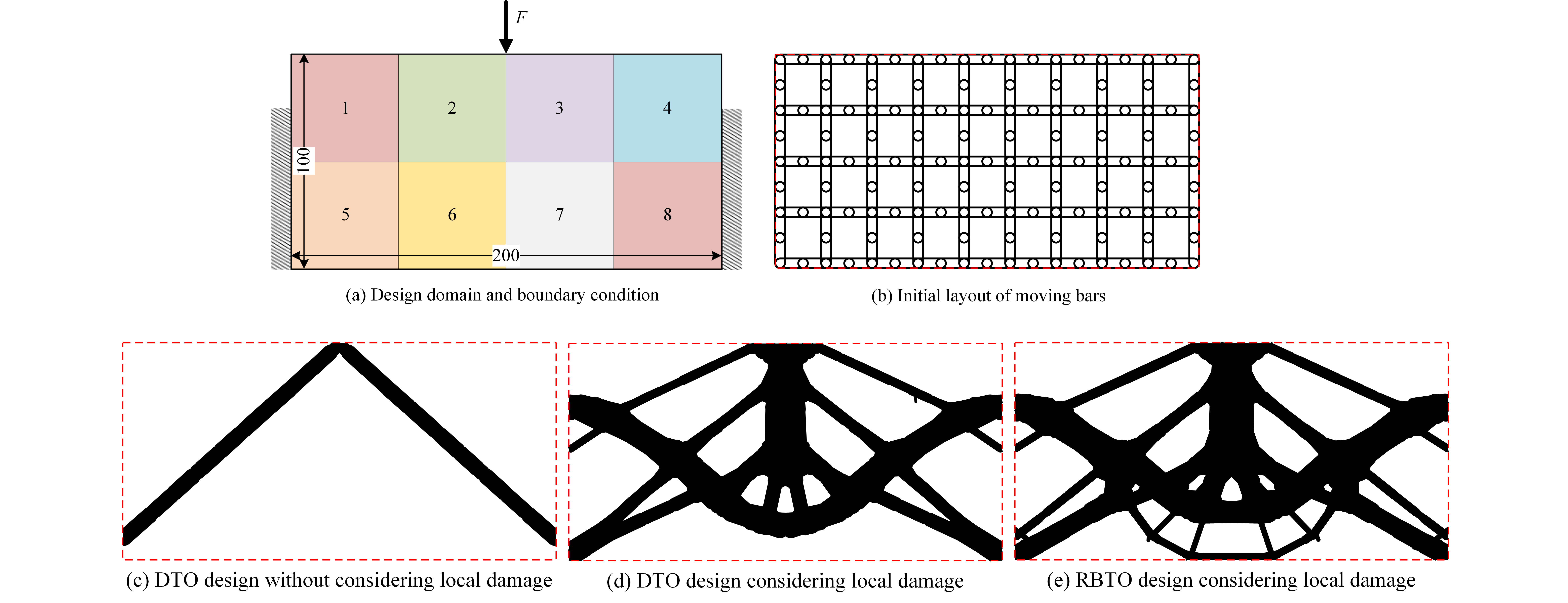 Open Access
Open Access
ARTICLE
Reliability-Based Topology Optimization of Fail-Safe Structures Using Moving Morphable Bars
1 School of Mechanical Engineering, Tianjin University, Tianjin, 300072, China
2 Department of Engineering Mechanics, Hefei University of Technology, Hefei, 230009, China
3 Mechanical Engineering Institute, Vietnam Maritime University, Hai Phong City, 180000, Vietnam
4 State Key Laboratory for Alternate Electrical Power System with Renewable Energy Sources, North China Electric Power University, Beijing, 102206, China
* Corresponding Authors: Zeng Meng. Email: ; Kai Long. Email:
Computer Modeling in Engineering & Sciences 2023, 136(3), 3173-3195. https://doi.org/10.32604/cmes.2023.025501
Received 17 July 2022; Accepted 03 November 2022; Issue published 09 March 2023
Abstract
This paper proposes an effective reliability design optimization method for fail-safe topology optimization (FSTO) considering uncertainty based on the moving morphable bars method to establish the ideal balance between cost and robustness, reliability and structural safety. To this end, a performance measure approach (PMA)-based double-loop optimization algorithm is developed to minimize the relative volume percentage while achieving the reliability criterion. To ensure the compliance value of the worst failure case can better approximate the quantified design requirement, a p-norm constraint approach with correction parameter is introduced. Finally, the significance of accounting for uncertainty in the fail-safe design is illustrated by contrasting the findings of the proposed reliability-based topology optimization (RBTO) method with those of the deterministic design method in three typical examples. Monte Carlo simulation shows that the relative error of the reliability index of the optimized structure does not exceed 3%.Graphic Abstract

Keywords
Cite This Article
 Copyright © 2023 The Author(s). Published by Tech Science Press.
Copyright © 2023 The Author(s). Published by Tech Science Press.This work is licensed under a Creative Commons Attribution 4.0 International License , which permits unrestricted use, distribution, and reproduction in any medium, provided the original work is properly cited.


 Submit a Paper
Submit a Paper Propose a Special lssue
Propose a Special lssue View Full Text
View Full Text Download PDF
Download PDF Downloads
Downloads
 Citation Tools
Citation Tools